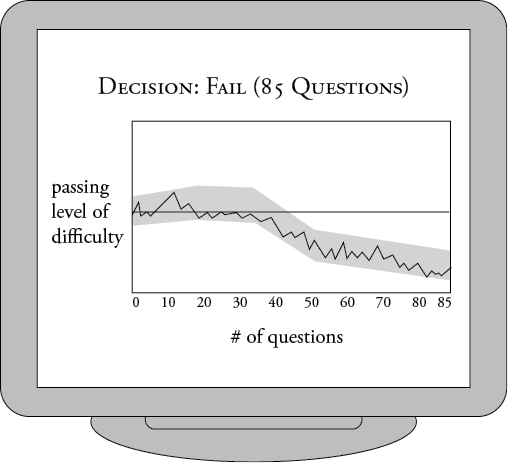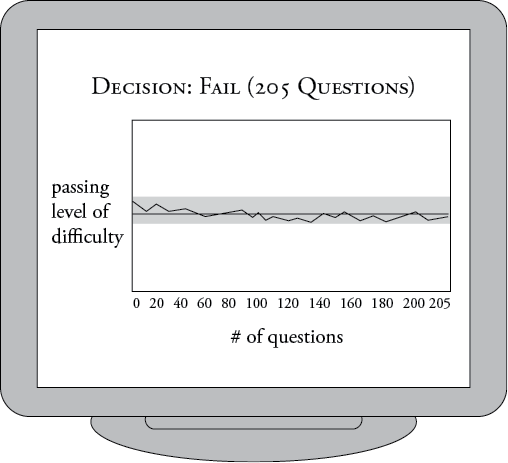
Most unsuccessful candidates on the NCLEX-PN® exam will usually say, “I almost passed.” Some of you did almost pass, and some of you weren’t very close. If you fail the exam, you will receive a diagnostic profile from NCSBN. In this profile, you will be told how many questions you answered on the exam. The more questions you answered, the closer you came to passing. The only way you will continue to get questions after you answer the first 85 is if you are answering questions close to the level of difficulty needed to pass the exam. If you are answering questions far above the level needed to pass or far below the level needed to pass, your exam will end at 85 questions.
Figure 1 on the next page shows a representation of what happens when a candidate fails in 85 questions. This student does not come close to passing. In 85 questions, this student demonstrates an inability to consistently answer questions correctly at or above the level of difficulty needed to pass the exam. This usually indicates a lack of nursing knowledge, considerable difficulties with taking a standardized test, or a deficiency in critical thinking skills.

Figure 2 shows what happens when a candidate takes all 205 questions and fails. This candidate “almost passed.” The candidate answers question 204 and the computer does not make a determination when it selects the last question. If the last question is below the level of difficulty needed to pass, the candidate fails.

If the last question is above the level of difficulty needed to pass, the candidate passes. If you took a test longer than 85 questions and failed, you were probably familiar with most of the content you saw on the exam but you may have difficulty using critical thinking skills or taking standardized tests.
The information contained on the diagnostic profile helps you identify your strengths and weaknesses on this particular NCLEX-PN® exam. This knowledge will help you identify where to concentrate your study when you prepare to retake the NCLEX-PN® exam.